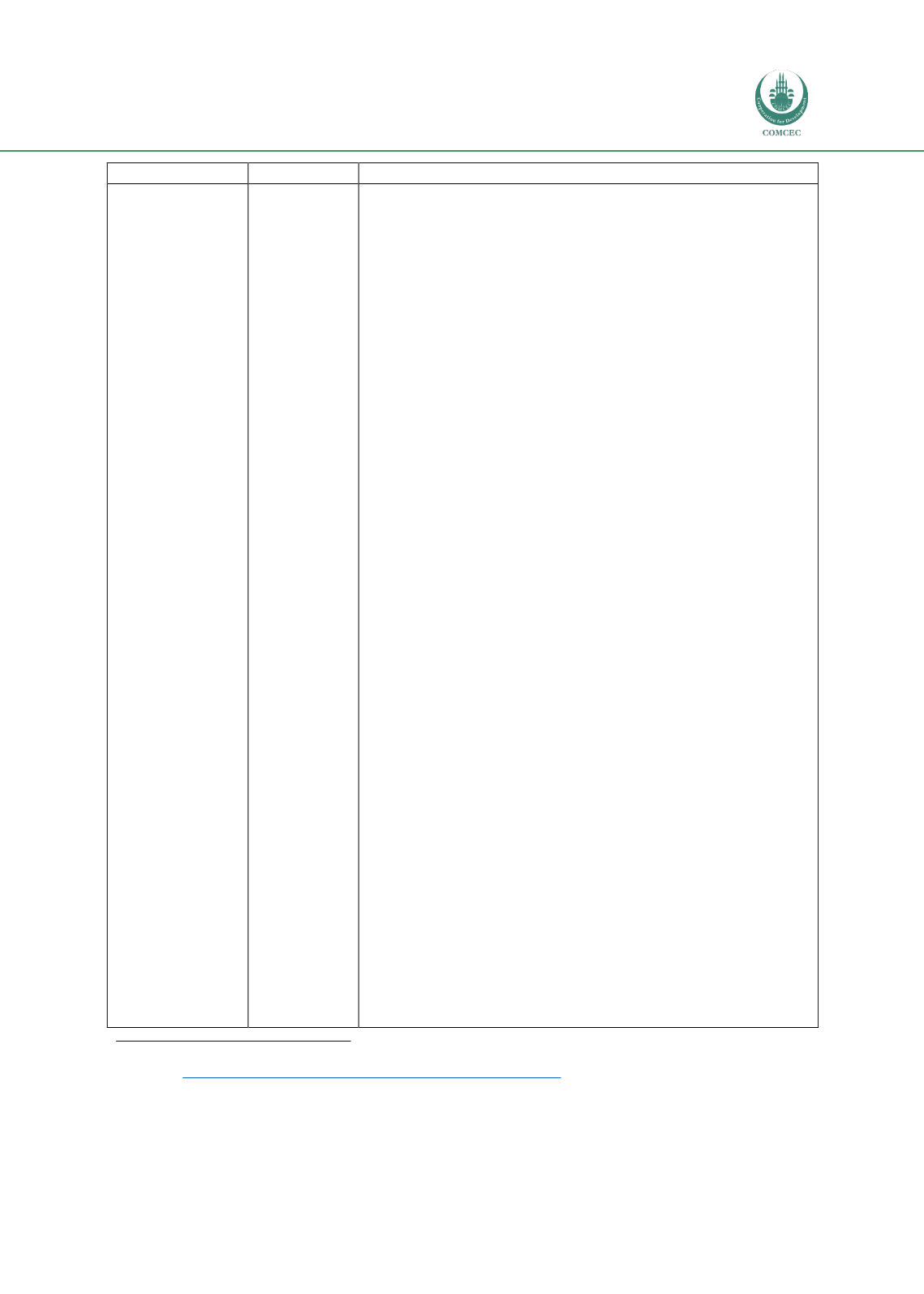

Improving Agricultural Market Performance:
Creation and Development of Market Institutions
139
Classification
Institution
Description
The rice stock BULOG maintains on behalf of the Government can be
released anytime for the purpose of market intervention. It is
distributed when the price of rice goes up and reaches certain levels
above the floor price. The floor price is calculated taking into account
factors like inflation, international market price, and recent economic
trends but has remained stable for the last three years.
Consumer prices are regulated by supply and demand. However, in
cases where world reference prices rise with 10% or more (including
transport costs and taxes), BULOG is mandated to intervene in the
market by importing rice.
408
BULOG trades in a total of 11 commodities, of which rice, corn, and
soybeans are mandatory and which directly reflects the Government’s
ambition to realize food self-sufficiency.
409
Other commodities include
cereals (e.g. wheat), commodities used in agro-processing (e.g. flour,
sugar, and oils), and horticulture (e.g. beef and unions). Rice is
particularly imported from Thailand, Vietnam, and India, while the
Government of Indonesia has signed Memorandum of Understandings
(MoUs) with countries in the region (e.g. Cambodia, Myanmar, and
Pakistan) as part of a rice distribution scheme so no procurement
process needs to be in place, saving time and money. BULOG imports
for these commodities while it also buys domestic sugar.
BULOG maintained its monopoly on importing certain types of rice
(e.g. medium-quality and consumption rice) while other types of rice
can be traded by the private sector as well (e.g. jasmine and basmati
rice). If market forces were to determine the price and allocation of
medium-quality and consumption rice, it would not lead to fair prices
and increased insecurity for the poorest households.
410
Hence, BULOG
is in charge of the RASTA rice distribution program.
BULOG is mandated to purchase rice to be distributed to poorer
segments of Indonesia’s society through the this RASTRA program.
411
This also provides the Government of Indonesia another tool to
regulate the price of rice and ensure a gradual increase of rice prices
as opposed to a steep and sudden increase. The RASTRA program,
formerly known under the name RASKIN, has been applied
particularly after the Asian economic crisis in 1998, after which rice
prices rose considerably.
412
BULOG provided rise at a lower price to
targeted poor families. Over the years, the distribution mechanism
behind RASTRA has changed, where RASTRA now distributes rice to
targeted households based on relative income rates (e.g. per province)
as opposed to earlier, when absolute rates were employed (i.e. similar
across the country). As of this moment, RASTRA provides rice to 27%
of the poorest households per province, resulting in an average of 15
to 20 kilo of rice per household per month.
413
The Government
remains in control of deciding the quantity, price, and time the rice is
408
FAO (2003), “WTO Agreement on Agriculture: The Implementation Experience - Developing Country Case Studies,”
available a
t http://www.fao.org/docrep/005/y4632e/y4632e00.htm#Contents [Accessed June 2017].
409
Interview conducted with BULOG in Jakarta, July 14, 2017
410
Ibid
411
WTO (2013),
Indonesia Trade Policy Review Report by the Secretariat
, Geneva: World Trade Organization.
412
Interview conducted with BULOG in Jakarta, July 14, 2017
413
Ibid


















